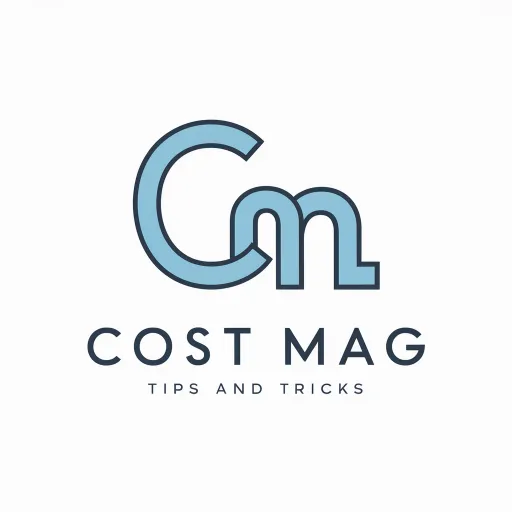Laser eye surgery has revolutionized the field of ophthalmology, offering millions of people the opportunity to achieve clear vision without the need for glasses or contact lenses. If you’ve been considering this life-changing procedure, you’re likely wondering, “How much is the cost of laser eye surgery?” The answer to this question can vary significantly, as several factors influence the overall cost of this innovative vision correction treatment.
In this article, we will explore the key determinants that affect the price of laser eye surgery, providing you with a better understanding of what to expect when seeking this remarkable solution for improved eyesight.
Understanding Laser Eye Surgery
Laser Eye Surgery, a revolutionary medical procedure, offers individuals an opportunity to bid farewell to glasses and contact lenses, enhancing their vision and quality of life. This remarkable procedure employs advanced laser technology to reshape the cornea, correcting refractive vision errors such as myopia, hyperopia, and astigmatism. A deeper comprehension of this innovative procedure is vital for anyone considering it. Dive into the intricacies of how lasers reshape the cornea, providing unparalleled clarity and freedom from visual aids.
Importance of Knowing the Cost
Understanding the cost of laser eye surgery is not just about dollars and cents; it’s about investing in your visual freedom. By exploring the financial aspects of this life-changing procedure, you empower yourself to make informed decisions. Delve into the significance of budget planning, as it plays a pivotal role in determining the quality of care and the potential savings in the long run.
Unravel the myriad factors that influence the cost, from the surgeon’s experience to the equipment used. This knowledge empowers you to find the best balance between affordability and quality, ensuring that your journey toward a better vision is not just clear but also cost-effective. Join us in this comprehensive exploration of laser eye surgery costs, where you’ll discover the true value of investing in your vision.
Types of Laser Eye Surgery

LASIK (Laser-Assisted In Situ Keratomileusis)
1. Procedure Overview
LASIK, a technological marvel, is a swift and precise procedure designed to correct common refractive vision issues. It begins with the creation of a thin flap on the cornea, followed by the use of an excimer laser to reshape the underlying tissue. Explore the intricate steps involved in LASIK, from the corneal reshaping to the flap’s repositioning, offering a detailed understanding of how this procedure works its magic on your vision.
2. Cost Factors for LASIK
The price of LASIK varies widely, influenced by several factors. Dive deep into the considerations that impact LASIK costs, including surgeon’s fees, facility expenses, and the technology used. Learn about how factors such as bladeless LASIK and wavefront-guided LASIK can affect the overall price, ensuring you have a comprehensive grasp of what to expect when budgeting for this life-changing surgery.
PRK (Photorefractive Keratectomy)
1. How PRK Differs from LASIK
PRK, a close cousin of LASIK, offers a different approach to correcting refractive vision errors. Uncover the key distinctions between these two procedures, from the absence of a corneal flap in PRK to the longer recovery period. Delve into the reasons why some individuals may choose PRK over LASIK, providing insights into which procedure might align better with your unique needs.
2. Cost Considerations for PRK
The financial aspects of PRK are as critical as the procedure itself. Discover the factors that shape the cost of PRK, from surgeon’s experience to geographic location. Explore how the absence of a corneal flap in PRK can influence both the procedure’s price and its associated post-operative care costs. This comprehensive understanding will enable you to make an informed decision when considering PRK as your path to improved vision.
SMILE (Small Incision Lenticule Extraction)
1. A Modern Alternative
SMILE, the latest innovation in laser eye surgery, represents a modern alternative to LASIK and PRK. This flapless and minimally invasive procedure has garnered attention for its potential benefits. Take a deep dive into the unique aspects of SMILE, from the creation of a lenticule to its extraction, and understand why it’s hailed as a groundbreaking choice for vision correction.
2. Comparing Costs to LASIK and PRK
As a prospective SMILE candidate, it’s crucial to grasp the cost dynamics of this cutting-edge procedure in comparison to LASIK and PRK. Explore the factors influencing SMILE’s pricing, such as the proprietary laser technology involved. Understand how this modern alternative may align with your budget and visual goals, providing a holistic perspective for making an informed choice.
Factors Influencing Laser Eye Surgery Cost

Surgeon’s Experience and Reputation
1. Why the Surgeon Matters
Your choice of surgeon is paramount when considering laser eye surgery. Discover why the surgeon’s expertise, qualifications, and reputation play a pivotal role in your surgical journey. From ensuring the highest standards of care to minimizing risks, understanding the significance of selecting a reputable surgeon is crucial to achieving successful and safe vision correction.
2. How Experience Affects Cost
The cost of laser eye surgery is often reflective of the surgeon’s experience. Delve into how a surgeon’s track record can impact pricing, as well as the potential cost savings of choosing a less experienced practitioner. Learn how to strike a balance between affordability and the assurance of being in capable hands, ensuring that your investment in clear vision is both wise and cost-effective.
Technology and Equipment
1. Impact on Precision and Safety
Cutting-edge technology and equipment are the backbone of laser eye surgery. Explore how the precision and safety of your procedure are deeply intertwined with the tools used. Gain insights into the role of wavefront technology, femtosecond lasers, and excimer lasers in enhancing surgical outcomes, guaranteeing a comprehensive understanding of the vital connection between technology and your vision’s future.
2. Cost Implications
The choice of technology can significantly affect the overall cost of your laser eye surgery. Discover how the implementation of advanced equipment can result in a higher price tag. Explore the financial considerations of opting for bladeless LASIK or customized wavefront-guided treatments, ensuring that you make an informed choice that aligns with your budget and visual aspirations.
Geographic Location
1. Urban vs. Rural Pricing
The location of your surgery center plays a substantial role in determining the cost of laser eye surgery. Uncover the cost disparities between urban and rural settings, exploring the reasons behind these variations. From overhead expenses to demand-related pricing, this insight will enable you to make location-informed decisions and potentially find cost-saving opportunities.
2. International Options
In a globalized world, international options for laser eye surgery have become increasingly accessible. Investigate the prospects of traveling abroad for your procedure, understanding the potential cost savings and the critical factors to consider, such as the quality of care and post-operative support. By delving into this topic, you’ll be well-equipped to make an informed decision, balancing cost-effectiveness with quality care for your vision correction journey.
Pre-Operative Assessments

Importance of Pre-Surgery Consultation
Before embarking on the life-changing journey of laser eye surgery, understanding the critical importance of a pre-surgery consultation is paramount. Explore how this initial meeting with your eye care professional serves as a crucial step in assessing your candidacy for the procedure. Uncover the depth of evaluation, which includes a comprehensive eye examination and discussion of your visual goals and medical history. By comprehending the significance of this consultation, you equip yourself with the knowledge needed to ensure the best possible surgical outcome.
Associated Costs and What to Expect
While the primary focus may be on the surgery itself, pre-operative assessments also come with associated costs. Gain insight into what to expect in terms of expenses during the pre-surgery phase, from the initial consultation fee to diagnostic tests and evaluations. Understand that these costs are integral to the overall investment in laser eye surgery and prepare for a transparent breakdown of expenses. By anticipating these financial aspects, you can plan your budget effectively and make an informed decision about proceeding with the procedure. Delve into the various tests and evaluations involved in pre-surgery assessments, such as corneal mapping, refraction tests, and pupil dilation, to ensure you’re well-prepared for this essential stage of your journey towards the improved vision.
Financing Options

Insurance Coverage
1. Rare Cases of Coverage
While insurance coverage for laser eye surgery is not common, some individuals may find themselves in unique circumstances where it is available. Explore these rare cases where insurance providers may cover a portion of the procedure. Understand the specific criteria and conditions that might make you eligible for coverage, offering hope for potential financial relief on your journey to clearer vision.
2. Typical Exclusions
The majority of insurance plans typically exclude coverage for elective procedures like laser eye surgery. Delve into the typical exclusions and reasons behind these policies, gaining a comprehensive understanding of why most individuals must seek alternative financing options. By grasping these common limitations, you can set realistic expectations regarding the role of insurance in your pursuit of visual enhancement.
Health Savings Accounts (HSAs) and Flexible Spending Accounts (FSAs)
Discover the financial avenues of HSAs and FSAs as valuable For laser eye surgery financing. Uncover how these tax-advantaged accounts can be utilized to cover the costs of the procedure, providing a detailed explanation of the rules and benefits. By exploring the nuances of HSAs and FSAs, you can tap into these funds to invest in your visual well-being while optimizing your financial strategy.
Payment Plans and Financing Options
1. In-House Financing
In-house financing options offered by laser eye surgery centers can be an attractive solution for those seeking more flexible payment arrangements. Explore the benefits of in-house financing, such as customized payment plans and low or zero-interest options. Gain insights into how this financing approach can make the dream of clear vision more attainable without incurring substantial upfront costs.
2. Third-Party Lenders
Third-party lenders specializing in medical financing offer another avenue for making laser eye surgery affordable. Dive into the details of third-party financing, including the application process, interest rates, and repayment terms. Understand how these lenders work with you to create a financial plan that aligns with your budget and ensures that cost doesn’t stand in the way of your visual enhancement journey.
Researching and Choosing a Surgeon

Credentials and Certifications
When it comes to selecting a surgeon for your laser eye procedure, their credentials and certifications are of paramount importance. Dive into the world of medical qualifications, exploring the significance of board certifications in ophthalmology and specialized training in refractive surgery. Understand how these credentials ensure your surgeon has the necessary skills and knowledge to provide safe and effective vision correction. By delving into this topic, you can make an informed choice, knowing your surgeon is well-prepared to perform the procedure.
Patient Reviews and Testimonials
Peer experiences are invaluable in the process of choosing a surgeon. Explore the world of patient reviews and testimonials, uncovering the genuine stories and feedback from those who have undergone laser eye surgery. Learn how to evaluate and weigh these personal accounts, considering factors like patient satisfaction, outcomes, and any concerns raised. By delving into the wealth of patient experiences, you gain insight into the surgeon’s track record and the potential outcomes you can expect, empowering you to make a confident decision.
Requesting Quotes and Consultations
The process of selecting a surgeon doesn’t end with credentials and reviews; requesting quotes and consultations is another critical step. Delve into the procedure of reaching out to potential surgeons to discuss your specific case. Understand what to expect during a consultation, from an assessment of your suitability for the surgery to a detailed breakdown of costs. By navigating this part of the decision-making process, you can compare offerings and pricing, ensuring that you’re not only comfortable with your surgeon but also well-informed about the financial aspects of your journey toward clearer vision.
Cost Transparency

What’s Included in the Quoted Price
The quoted price for your laser eye surgery is not just a number; it represents a bundle of services. Delve into the details of what’s included in the quoted price to gain a comprehensive understanding of the value you’re receiving. Explore the components of the cost, from the surgical procedure itself to pre-operative assessments, post-operative care, and any necessary medications. By unraveling the contents of the quoted price, you can evaluate whether it aligns with your expectations and financial planning.
Potential Additional Costs
While the quoted price provides clarity, it’s equally important to anticipate potential Costs. Dive into the intricacies of these potential expenses, such as enhancements or touch-up surgeries, post-operative medications, and follow-up appointments. Understand that these Costs may arise, depending on your individual needs and the specific circumstances of your surgery. By being prepared for these contingencies, you can make a more accurate assessment of the overall financial commitment associated with laser eye surgery.
Hidden Fees to Watch Out For
Cost transparency isn’t just about what’s explicitly stated; it’s also about being vigilant for hidden fees that may catch you off guard. Explore the concept of hidden fees, from facility fees to surgeon’s fees, and how they can impact your final bill. Understand the importance of asking detailed questions about potential hidden costs during your consultation to avoid any unwelcome surprises. By proactively seeking out this information, you can navigate the financial aspects of your surgery with confidence and ensure that you’re fully informed about the total investment required for clear vision.
Post-Operative Care

Follow-Up Appointments
Your laser eye surgery journey extends beyond the operating table, and follow-up appointments are a critical aspect of post-operative care. Delve into the importance of these appointments, as they allow your surgeon to monitor your progress and address any concerns. Explore the typical schedule of follow-up visits, including the immediate post-operative check, one-week, one-month, and several months’ follow-ups. By understanding the significance of these appointments, you ensure that your vision remains on the right track and that any issues are promptly addressed.
Associated Costs
While you’ve budgeted for the primary surgical cost, it’s equally essential to consider the associated costs of post-operative care. Uncover the potential expenses related to follow-up appointments, such as Diagnostic tests and evaluations. Learn about any post-operative medications or eye drops that may be necessary for optimal healing and recovery. By acknowledging these associated costs, you can plan your budget effectively and ensure that you have a comprehensive financial picture of your entire laser eye surgery journey, from the operating room to the complete recovery process.
Cost-Benefit Analysis

Assessing the Value of Laser Eye Surgery
Laser eye surgery is not just a financial transaction; it’s a profound investment in the most precious of your senses – your vision. To truly understand the value of this procedure, it requires a comprehensive cost-benefit analysis. This analysis encompasses more than just the dollars and cents; it’s about recognizing the profound impact this decision can have on your overall quality of life.
Picture a life free from the daily struggles of glasses and contact lenses. Laser eye surgery bestows a newfound sense of freedom and convenience upon you. Imagine waking up every morning with crystal-clear vision, unburdened by the need to search for your glasses or fiddle with contact lenses. This convenience alone can significantly enhance your day-to-day existence, making activities like swimming, playing sports, and simply reading a book in bed a hassle-free pleasure.
Now, let’s talk about long-term savings. Although the initial cost of laser eye surgery may seem substantial, over time, you’ll liberate yourself from the recurring expenses associated with purchasing glasses, contact lenses, and cleaning solutions. These costs, while seemingly innocuous individually, can accumulate significantly over the years. Laser eye surgery offers the potential for you to break free from this financial burden, contributing to a brighter, cost-effective future.
The benefits aren’t limited to just the tangible financial aspect. Laser eye surgery boosts self-confidence, enhances job prospects, and elevates your overall quality of life, factors that can’t be quantified in monetary terms. The ability to see clearly without reliance on corrective lenses empowers you in ways that reach far beyond the price tag of the surgery.
When assessing the value of laser eye surgery, it’s imperative to look beyond the immediate expense. It’s about considering the convenience, long-term savings, and intangible benefits that contribute to your holistic well-being. By taking this broader perspective, you’re well-equipped to make an informed decision that not only makes financial sense but also bestows upon you the invaluable gift of unburdened vision.
Lifetime Savings on Glasses and Contacts
Laser eye surgery isn’t just an investment in your vision; it’s a passport to significant lifetime savings on glasses and contact lenses. While the upfront cost of the procedure often takes center stage, it’s vital to understand the long-term financial benefits this surgery brings to the table.
Think about the never-ending cycle of purchasing prescription glasses and contact lenses. Every year or two, a new prescription is required, leading to the purchase of a fresh set of eyewear or contacts. The cumulative cost of these recurrent acquisitions can be deceptively high. Laser eye surgery, conversely, provides a one-time solution to your vision issues, eliminating the need for these recurring financial outlays.
Beyond the expense of eyewear itself, consider the Costs related to accessories like lens cleaning solutions, cases, and regular eye exams. These seemingly minor expenses accumulate over time, contributing to a continuous financial burden.
Yet, it’s not solely about the financial aspect. The convenience of no longer relying on glasses or contacts is immeasurable. Envision the freedom of waking up in the morning with clear vision, no need to reach for your glasses or deal with contact lenses. Activities like swimming, exercising, or simply enjoying a rainy day without rain-smeared glasses become effortless and enjoyable.
When assessing lifetime savings, also ponder the intangible benefits. The surge in self-confidence, the potential for career advancements, and the overall enhancement in your quality of life are beyond any price tag. These elements are immeasurable and should not be underestimated when evaluating the financial impact of laser eye surgery.
Laser eye surgery is an initial investment that leads to substantial lifetime savings and an overall enrichment of your quality of life. It’s a financial choice that reaches far beyond the realm of numbers, delivering the freedom to see clearly and savor life without the constraints of corrective lenses.
Risks And Complications: How Much Is The Cost Of Laser Eye Surgery?
Common Risks and How They’re Managed
Laser eye surgery, like any medical procedure, is not without its share of potential risks and complications. Understanding these is paramount for informed decision-making. Common risks include issues like dry eyes, glare, halos, and night vision disturbances. While these might sound concerning, it’s crucial to emphasize that most patients experience only mild and temporary symptoms. Dry eyes, for instance, can be managed with lubricating eye drops, which are generally inexpensive and readily available. Glare and halos often diminish as the eyes heal.
Meticulous preoperative assessments help surgeons identify individuals at higher risk for complications, allowing for more cautious selection and patient counseling. By recognizing common risks, you can have a candid conversation with your surgeon about your individual risk profile and learn how these issues are managed. It’s essential to remember that advancements in technology and surgical techniques have significantly reduced the incidence of complications.
The Cost of Addressing Complications
While the majority of laser eye surgeries are successful, there is a small percentage of cases where complications can arise. Understanding the financial implications of addressing these complications is a key aspect of your decision-making process. For instance, if you were to experience a more severe complication like corneal ectasia, which is a rare but serious condition, addressing it might involve Surgeries or interventions.
It’s vital to be aware of the potential financial burdens associated with addressing complications. While the initial surgery cost covers the standard procedure, addressing complications often requires Funds. However, it’s important to note that many surgeons offer post-operative care packages that include follow-up appointments and potential complication management at a reduced cost or as part of the initial fee.
Having comprehensive discussions with your surgeon about potential complications, their frequency, and associated costs is a crucial part of your decision-making process. This way, you can be well-prepared for the financial aspects of your laser eye surgery journey, understanding both the likelihood of complications and the financial considerations associated with addressing them.
Legal and Ethical Considerations
Informed Consent
In the world of medical ethics, informed consent stands as an integral pillar, particularly in the context of laser eye surgery. It’s not just a signature on a piece of paper; it’s an essential part of a patient’s autonomy and right to make decisions about their own body.
Informed consent involves a comprehensive dialogue between the patient and the surgeon. It extends beyond a mere acknowledgment of risks; it’s about understanding the procedure, its potential outcomes, and the alternatives available. This process ensures that patients are aware of what to expect, both the benefits and the risks, allowing them to make an informed decision about whether to proceed with the surgery.
Informed consent also includes discussions about the surgeon’s experience and credentials, the expected post-operative care, and the cost breakdown. It’s about providing patients with a holistic view of their laser eye surgery journey, so they have the knowledge to make the right choice for their vision.
Malpractice Insurance
Malpractice insurance serves as a safety net for patients, safeguarding their interests in the event of unforeseen complications or suboptimal outcomes. This insurance underscores a surgeon’s commitment to providing a high standard of care.
Surgeons who carry malpractice insurance provide patients with the assurance that they are financially prepared to address any legal or financial implications that might arise from complications. It demonstrates accountability and responsibility on the surgeon’s part, reflecting a commitment to the patient’s well-being.
Patients should inquire about their surgeon’s malpractice insurance coverage as part of their pre-surgery consultations. Understanding this aspect ensures that, in the unlikely event of complications leading to legal action, there are financial In place to address any issues. It’s a vital component of the legal and ethical framework that surrounds laser eye surgery, ultimately working to protect the patient’s best interests and ensuring that the surgical journey is not just a medical procedure but a legally and ethically sound one.
International Medical Tourism
Cost Savings Abroad
International medical tourism has gained popularity as a cost-effective alternative for individuals seeking laser eye surgery. One of the primary drivers behind this trend is the substantial cost savings that can be realized by choosing to have the procedure performed abroad.
Laser eye surgery costs can significantly vary by country, often due to differences in healthcare infrastructure, labor costs, and regulatory factors. In some countries, particularly in medical tourism hotspots like India, Mexico, and Thailand, the cost of laser eye surgery can be a fraction of what it would be in the United States or Western Europe.
Cost savings abroad extend beyond the procedure itself. Many medical tourism packages include accommodation, transportation, and even local tours, making the overall cost of the trip highly competitive with what one might pay for the surgery alone in their home country.
It’s essential to consider that while cost savings are a significant advantage, choosing international medical tourism also comes with certain considerations, including cultural and language differences, and the need for thorough research to ensure the quality and safety of the medical facility.
Weighing the Benefits and Risks
International medical tourism offers the allure of cost savings and the opportunity to explore a new destination, but it also comes with associated benefits and risks that should be weighed carefully.
Benefits include potential savings that can be substantial, exposure to different cultures, and access to highly skilled medical professionals in top-tier facilities. It’s an opportunity to combine medical treatment with a travel experience.
However, it’s crucial to be mindful of potential risks. These may include variations in medical standards and regulations, potential language barriers, and limited legal recourse in the event of unforeseen complications or malpractice. Researching and selecting a reputable medical facility with a proven track record is essential to mitigate these risks.
Weighing the benefits and risks of international medical tourism for laser eye surgery is a decision that requires thoughtful consideration. It’s not just about cost savings; it’s about ensuring your safety and the quality of care provided. By conducting thorough research, asking questions, and seeking recommendations, you can make an informed decision about whether international medical tourism is the right choice for your laser eye surgery journey.
Case Studies
Real-World Examples of Laser Eye Surgery Costs
Delving into real-world case studies provides invaluable insights into the diverse costs of laser eye surgery. These studies showcase the actual experiences of individuals who have undergone the procedure, shedding light on the financial aspects of their journeys. By examining these case studies, you can gain a realistic understanding of what laser eye surgery might cost in different scenarios and locations.
Case studies allow you to explore a wide range of factors that impact costs, such as the type of surgery performed (LASIK, PRK, SMILE), the surgeon’s expertise, and the geographic location of the procedure. They reveal the nuances of pricing, from urban centers to rural areas, and even international options. These studies provide you with tangible examples that illustrate the importance of factors like technology, pre-operative assessments, and post-operative care in determining the overall price of the surgery.
Whether you’re looking to uncover potential cost-saving opportunities or want to budget effectively for your own laser eye surgery, real-world case studies offer a treasure trove of information. They provide a glimpse into the financial journeys of real patients, making it easier for you to navigate the decision-making process with confidence.
How Patients Made Informed Decisions
The journey towards laser eye surgery is a significant decision, and understanding how others have made informed choices can be incredibly enlightening. Real-world case studies not only reveal the costs but also demonstrate how patients navigated the process, making educated decisions along the way.
These case studies detail the steps patients took to evaluate their surgeons, assess their suitability for the procedure during pre-operative consultations, and understand the breakdown of costs. They illuminate the importance of considering technology and equipment choices, as well as follow-up care.
By examining how these individuals conducted their research, asked relevant questions, and selected reputable surgeons, you can glean invaluable advice and strategies for your own journey. You’ll discover how patients balanced cost considerations with the desire for quality and safety, ultimately making choices that were not only financially sound but also in the best interest of their visual well-being.
Real-world case studies are a source of inspiration and guidance, showcasing the practical steps and considerations taken by those who successfully underwent laser eye surgery. They offer a roadmap for how you, too, can make informed decisions and embark on your own path to improved vision with confidence.
Current Market Trends
Emerging Technologies
The landscape of laser eye surgery is continually evolving with the emergence of cutting-edge technologies. Staying informed about these advancements is crucial for those considering the procedure.
One remarkable trend is the rise of custom wavefront-guided LASIK, which tailors the surgery to the unique imperfections in an individual’s eyes. This approach has significantly improved visual outcomes, even for those with challenging vision issues.
Another exciting development is the use of femtosecond lasers for the creation of corneal flaps, a technique employed in LASIK. These lasers offer enhanced precision, reducing the risk of complications and broadening the pool of eligible candidates.
The introduction of SMILE (Small Incision Lenticule Extraction) represents a minimally invasive alternative to traditional LASIK. This technology boasts quicker recovery times and less post-operative discomfort.
Keeping abreast of these technological trends empowers prospective patients to make informed choices, ensuring that they benefit from the latest advancements in the field.
Pricing Trends
Pricing trends in laser eye surgery are essential for individuals seeking affordability and value. Over recent years, the competitive nature of the industry has driven pricing trends that favor the consumer.
One notable trend is the increasing availability of financing options, which eases the financial burden for patients. In-house financing plans offered by surgery centers and third-party lenders specializing in medical financing are becoming more common. This opens doors for a broader demographic to access laser eye surgery.
Another encouraging development is the transparency in pricing. Many reputable clinics now provide comprehensive, all-inclusive quotes that cover the entire surgical journey. This pricing model simplifies the decision-making process, allowing patients to budget effectively and minimize unexpected costs.
It’s also important to mention that some surgeons offer bundled services, which can result in cost savings when multiple family members or friends opt for surgery together.
Understanding these pricing trends equips prospective patients with the knowledge needed to navigate the financial aspects of laser eye surgery effectively. It ensures that financial considerations are not a barrier to experiencing the benefits of improved vision.
Future of Laser Eye Surgery Costs
Predictions for Cost Evolution
The future of laser eye surgery costs holds both promise and intrigue. As technology continues to advance and accessibility expands, we can make certain predictions about how costs may evolve.
One foreseeable trend is the potential for greater affordability. As the demand for laser eye surgery increases, economies of scale may come into play, reducing the costs associated with equipment and procedures. This could lead to more competitive pricing, making laser eye surgery accessible to an even broader audience.
The integration of telemedicine and remote post-operative care may contribute to cost savings. Patients can have consultations and follow-up appointments without the need for in-person visits, potentially lowering the overall financial investment in the surgery.
With an increasing number of clinics and surgeons offering laser eye surgery, competition may also stimulate price reductions. Surgeons and clinics may adopt more competitive pricing models to attract patients, resulting in beneficial cost trends.
Potential Breakthroughs
The future of laser eye surgery costs may also be influenced by potential breakthroughs in technology and techniques. Emerging innovations like artificial intelligence (AI) could play a pivotal role in enhancing the precision and safety of laser eye surgery, potentially reducing the likelihood of complications.
Moreover, the development of new procedures and minimally invasive techniques, building on the success of SMILE (Small Incision Lenticule Extraction), may offer cost-effective alternatives to traditional LASIK, reducing the financial barrier for many.
It’s also possible that health insurance providers may expand their coverage for laser eye surgery as it becomes more mainstream. This evolution could make the procedure more affordable for a larger portion of the population.
The future of laser eye surgery costs is marked by a combination of innovation and accessibility. While exact predictions may be challenging, it’s evident that technology and competition will play a vital role in shaping the financial landscape of this transformative medical procedure. Staying informed and engaged in ongoing advancements can be the key to unlocking a more affordable and accessible future for laser eye surgery.
FAQS;
What is the average cost of laser eye surgery?
The average cost of laser eye surgery can vary significantly depending on factors such as the type of procedure (e.g., LASIK, PRK, SMILE), the surgeon’s experience, and geographic location. In the United States, for example, the average cost typically ranges from $2,000 to $3,000 per eye. However, it’s essential to consult with a local provider or surgeon to get precise pricing for your specific situation.
Are there any hidden costs associated with laser eye surgery?
While some clinics offer all-inclusive pricing that covers pre-operative assessments, the procedure itself, and post-operative care, it’s crucial to inquire about potential hidden costs. These can include enhancements or touch-up surgeries, post-operative medications, and follow-up appointments. Be sure to discuss these with your surgeon during your consultation to avoid any surprises.
Can I use insurance to cover the cost of laser eye surgery?
In most cases, laser eye surgery is considered an elective procedure, and insurance plans do not typically cover it. However, some rare exceptions exist, such as when surgery is necessary to correct a medical condition. It’s essential to check with your insurance provider to determine if you have any coverage or consult with your surgeon to explore potential options.
Are there financing options available for laser eye surgery?
Yes, many laser eye surgery centers offer financing options to help patients manage the cost. These can include in-house financing plans, health savings accounts (HSAs) and flexible spending accounts (FSAs), as well as third-party lenders specializing in medical financing. These options can make the procedure more affordable by spreading the cost over time.
Do the costs differ between LASIK, PRK, and SMILE procedures?
Yes, the costs for LASIK, PRK, and SMILE procedures can vary. LASIK is often the most common and cost-effective option, while PRK may be slightly more expensive due to its longer recovery time. SMILE, as a newer procedure, can be competitive with LASIK pricing in some cases. The choice of procedure should be based on your specific needs and surgeon’s recommendation rather than cost alone.
Conclusion
The cost of laser eye surgery can vary significantly based on factors such as the type of procedure, surgeon’s experience, and geographic location. It’s essential to obtain detailed, all-inclusive quotes, inquire about potential hidden costs, and explore financing options to make an informed financial decision.
Looking ahead, the future of laser eye surgery costs holds the promise of greater affordability, driven by technology advancements, competition, and potential breakthroughs. Staying informed about these evolving trends will help prospective patients make cost-effective decisions while enjoying the benefits of improved vision.

